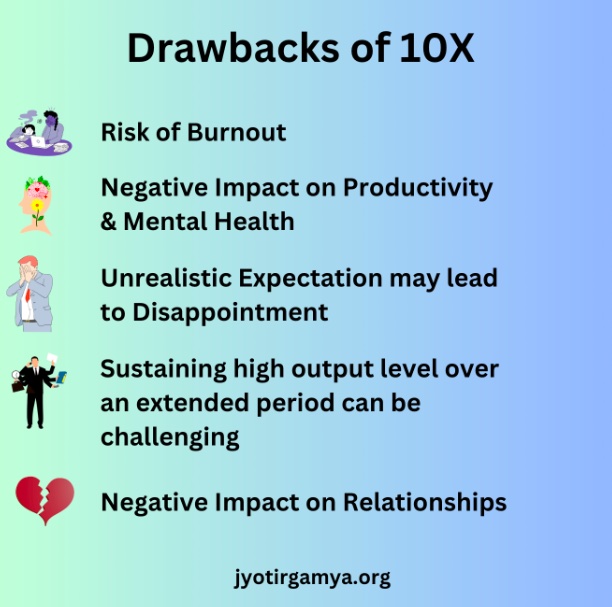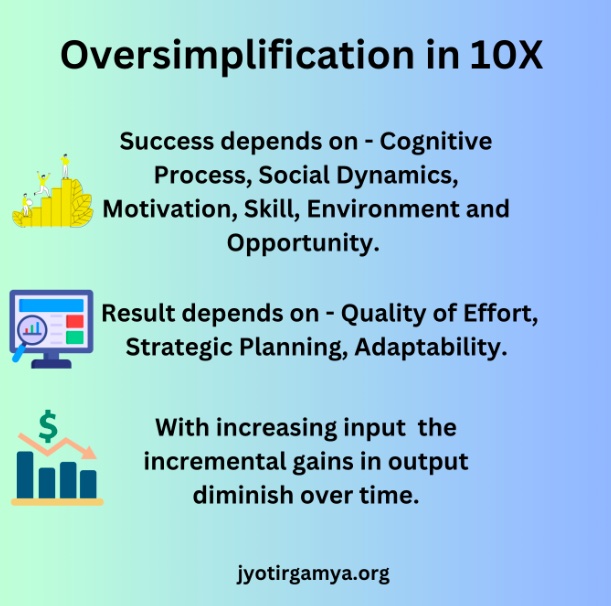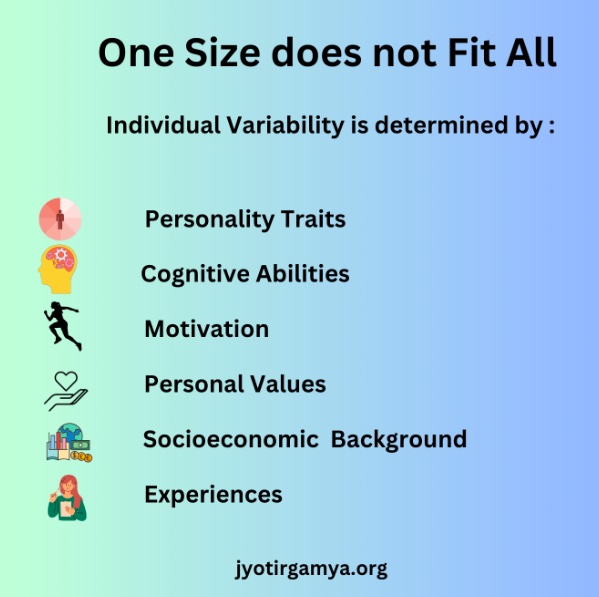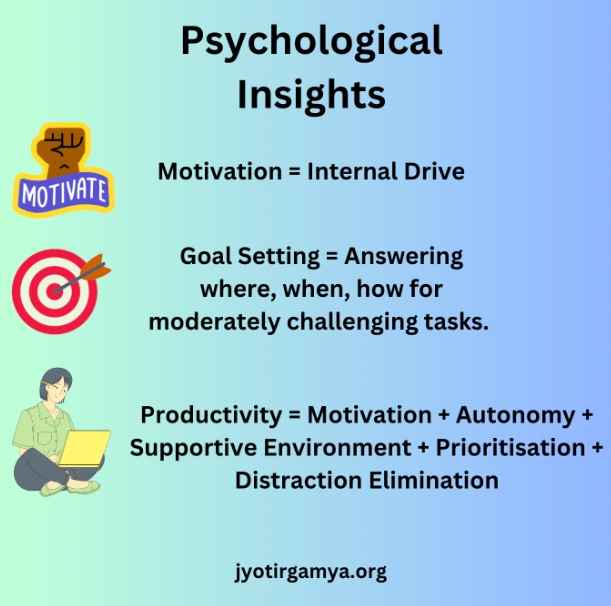The 10X Rule Unveiled: Exploring Grant Cordone's Approach to Success and Evidence-Based Alternatives
1. Introduction
The 10X Rule, popularized by Grant Cordone, is a productivity and success philosophy that advocates multiplying efforts and setting ambitious goals to achieve exceptional results. According to Cordone, individuals should aim to put in ten times more effort and take massive action to overcome challenges and stand out in their endeavors.
The 10X Rule has gained substantial popularity and has influenced numerous individuals and organizations seeking success. Cordone’s books, such as “The 10X Rule: The Only Difference Between Success and Failure,” have become bestsellers, indicating his philosophy’s broad reach and impact. In addition, many people have embraced the rule, attributing their achievements to its principles.

This article aims to comprehensively analyze the 10X Rule, examining its scientific validity while emphasizing the need for a balanced assessment based on credible research and expert insights.
2. Understanding the 10X Rule
2.1 Explanation of the core principles of the 10X Rule
The core principles of the 10X Rule revolve around the concept of multiplying efforts and actions to achieve exceptional results. According to Grant Cordone, the proponent of this rule, individuals should set goals and take actions ten times greater than they initially anticipated. By amplifying their efforts, individuals are encouraged to overcome challenges, push beyond their comfort zones, and tap into their full potential.
2.2 Grant Cordone’s Arguments for the Rule’s Effectiveness
Grant Cordone argues that the 10X Rule is effective in driving extraordinary outcomes. He asserts that by setting ambitious goals and consistently taking massive action, individuals can break through barriers and achieve higher levels of success. Cordone believes that most people underestimate the effort required to attain their objectives, and by embracing the 10X mindset, they can develop the necessary discipline, focus, and resilience to outperform their competition.
2.3 Discussion of the purported benefits and promises associated with the rule
Supporters of the 10X Rule claim that it offers several benefits and promises. They argue that individuals can experience significant personal and professional growth, surpass their previous achievements, and overcome limitations. Proponents suggest that it enhances productivity, amplifies motivation, and fosters a mindset of continuous improvement. The 10X Rule gives individuals a competitive edge and allows them to seize opportunities others overlook.
3. The Dark Side of the 10X Rule: Drawbacks and Pitfalls
The 10X Rule, although famous and influential, has its drawbacks and potential pitfalls. In this section, we will examine some potential downsides of implementing the 10X Rule, shedding light on its negative consequences on individuals.
3.1 Examination of potential drawbacks of the 10X Rule

3.1.1 Risk of Burnout and its negative impact on Productivity and mental health
Implementing the 10X Rule can place individuals under significant pressure to constantly push themselves to extreme performance levels. This relentless pursuit of high output without sufficient breaks or self-care can lead to burnout. Burnout is characterized by emotional exhaustion, reduced productivity, and declining mental well-being. Numerous studies have linked burnout to negative consequences such as decreased job satisfaction, increased absenteeism, and long-term mental health issues.
3.1.2 Setting unrealistic expectations that may lead to disappointment or self-doubt
The 10X Rule advocates for setting goals and targets ten times greater than what is typically considered reasonable. This can undermine motivation and hinder progress.
3.1.3 Challenges in Maintaining a consistent level of high output
Sustaining a consistently high output level over an extended period can be challenging. The 10X Rule promotes continuous and relentless effort, which may only be sustainable for some. However, factors such as fatigue, lack of resources, and competing demands can make it challenging to consistently maintain the required level of productivity. This can lead to frustration and failure when individuals cannot meet the rules' expectations.
3.1.4 The potential risk of injury, financial strain, and negative impact on relationships
The relentless pursuit of the 10X Rule’s high-performance standards can have unintended consequences. For example, individuals may neglect their physical well-being, pushing themselves beyond their limits and risking injury. Moreover, the financial strain of investing significant resources in pursuing unrealistic goals can harm one’s financial stability. Additionally, the excessive focus on personal goals and work output may lead to neglecting relationships and social connections, resulting in strained personal and professional relationships.
3.2 Counterarguments and Perspectives on the potential benefits of the 10X Rule
While the potential drawbacks of the 10X Rule are significant, proponents argue that it also offers certain benefits and can be advantageous under specific circumstances.
3.2.1 Ambitious goal-setting and motivation
The 10X Rule encourages individuals to set ambitious goals that push them out of their comfort zones. Proponents argue that this can fuel motivation, providing a sense of purpose and drive. In addition, by aiming for goals significantly higher than the norm, individuals may stretch their limits, achieve more than they initially thought possible, and experience personal growth.
3.2.2 Taking Action and Persevering in the Face of Challenges
The 10X Rule emphasizes taking massive action and maintaining perseverance when faced with obstacles. Advocates argue that this mindset helps individuals overcome setbacks and develop resilience. Individuals may develop the skills and determination necessary to succeed in demanding environments by persisting through challenges.
It is essential to consider both the potential drawbacks and the counterarguments when assessing the merits of the 10X Rule. By critically examining these perspectives, individuals can decide whether this approach aligns with their circumstances and goals.
4. The Fallacy of Oversimplification
Understanding human behavior and success is a complex endeavor that requires a nuanced approach. While specific theories and rules may appear attractive due to their simplicity, it is crucial to evaluate their validity critically. In the case of the 10X Rule, which advocates for multiplying efforts to achieve extraordinary results, it is necessary to delve deeper and explore the fallacy of oversimplification. This section aims to shed light on the complexity of human behavior and success, challenge the notion that multiplying efforts always leads to multiplied results, and introduce the concept of diminishing returns about the 10X Rule.

4.1 Explanation of the complex nature of human behavior and success
Human behavior and success are multifaceted phenomena influenced by various factors such as cognitive processes, social dynamics, and individual differences. In addition, the intricate interplay between motivation, skills, environment, and opportunity shapes the outcomes we achieve. Understanding this complexity is crucial in evaluating the effectiveness of the 10X Rule and its applicability to diverse individuals and circumstances.
4.2 Multiplying efforts does not always lead to multiplied results
While the 10X Rule suggests that multiplying efforts will inevitably yield multiplied results, this notion oversimplifies the intricate relationship between effort and outcomes. Research has shown that success is not solely determined by the quantity of effort invested but rather by the quality of effort, strategic planning, and adaptability to changing circumstances. Merely increasing effort without considering these factors may not lead to proportionate increases in results.
4.3 The concept of diminishing returns and its relevance to the 10X Rule
The concept of diminishing returns states that as one increases input or effort, the incremental gains in output or results diminish over time. In the context of the 10X Rule, this means that while initially, an increase in effort may lead to significant improvements, there comes a point where the additional effort produces diminishing returns. Understanding this concept helps us recognize the limitations of the 10X Rule and the need for a more nuanced approach to achieving success.
In light of the complex nature of human behavior and success, the refutation of oversimplified notions regarding effort and results, and the relevance of diminishing returns, it becomes evident that the 10X Rule’s claims require critical examination. We can better understand the rule’s scientific validity and practical implications by delving deeper into these aspects.
5. Flawed Interpretation of Neuroscience
This section delves into Cordone’s references to neuroscience in support of the 10X Rule, exploring the misinterpretation of specific neuroscience concepts, such as dopamine and motivation, as well as neuroplasticity and skill development.
He asserts that by amplifying one’s efforts tenfold, individuals can activate specific neural mechanisms that lead to exceptional outcomes. Cordone suggests that neuroscience provides evidence for the effectiveness of the 10X Rule in maximizing motivation, skill development, and overall performance.

5.1 Dopamine and Motivation
Grant Cordone’s interpretation of dopamine and motivation oversimplifies the complex relationship between the two. While dopamine is involved in the brain’s reward system and can play a role in motivation, it is not the sole determinant. Research studies have shown that motivation is a multifaceted construct influenced by various factors, including cognitive processes, individual differences, and environmental factors (Berridge, 2012; Salamone et al., 2018). Dopamine release alone does not guarantee sustained motivation, as it interacts with other neurotransmitters and brain systems in complex ways.
5.2 Neuroplasticity and Skill Development
Neuroplasticity is the brain’s ability to change and adapt. This means the brain can change its structure and function in response to experience.
For example, if you learn a new skill, the brain will create new connections between neurons in the brain’s areas involved in that skill. This is why it is possible to improve your memory, motor skills, and cognitive abilities through practice.
Neuroplasticity is also crucial for recovery from brain injury. When the brain is damaged, it can reorganize itself to compensate for the damage. This is why some people who have suffered a stroke can regain some of their lost function.
Imagine that you have a garden. The plants in your garden are like the neurons in your brain. When you plant a new seed, the plant will grow and develop over time. The more you water and fertilize the plant, the more robust it becomes.
The same is true for the neurons in your brain. The more you use them, the stronger and more efficient they will become. This is why it is essential to challenge your brain and learn new things regularly.
Neuroplasticity is a lifelong process. The brain is constantly changing and adapting, even in old age. Learning new things and improving your brain function is never too late.
While neuroplasticity is a fundamental mechanism underlying skill development, simply exerting ten times the effort will lead to accelerated neuroplastic changes is an oversimplification.
Effective skill development requires deliberate and targeted practice, where individuals engage in focused and structured training tailored to their specific goals (Ericsson et al., 2018). Merely amplifying efforts without a strategic approach may not necessarily enhance neuroplasticity or skill acquisition.
6. Individual Variability and Contextual Factors
Understanding the role of individual variability and contextual factors is crucial when considering success. Recognizing that each person possesses unique attributes and experiences and acknowledging the influence of the surrounding environment allows for a comprehensive understanding of the complexity of achieving success.

6.1 Highlighting the importance of individual differences in success
Individual differences play a significant role in determining success. Various factors such as personality traits, cognitive abilities, motivation, and personal values contribute to the outcomes individuals achieve. For instance, research studies have consistently shown that conscientiousness, perseverance, and emotional intelligence positively correlate with success in diverse domains.
Furthermore, individuals may possess different skill sets, backgrounds, and life experiences, which can significantly impact their paths to success. These differences give rise to unique strengths and challenges, making it essential to appreciate each person’s individuality when considering success.
6.2 Discussion of contextual factors that significantly impact outcomes
Contextual factors substantially influence outcomes, including socioeconomic status, cultural background, educational opportunities, and resource access. For instance, individuals from disadvantaged backgrounds may face systemic barriers that hinder their success, despite their talents and efforts.
Moreover, environmental factors such as social support, mentorship, and networking opportunities also shape outcomes. Research has demonstrated that individuals with access to supportive networks and resources can better achieve their goals and aspirations.
6.3 Rejection of the notion that a single rule can universally apply to all individuals in all circumstances
It is essential to reject the notion that a single rule or approach can be universally applied to all individuals in all circumstances regarding success. Instead, success is a multifaceted concept encompassing various domains, such as career, relationships, and personal well-being. Moreover, each domain has unique dynamics and demands, requiring tailored strategies and approaches.
Moreover, what may work for one person in a particular context may yield different results for someone else in a different context. The interaction between individual differences and contextual factors makes it necessary to consider a more nuanced and personalized approach to success.
By recognizing and embracing individual variability and contextual factors, we can move beyond a one-size-fits-all mindset and promote a more inclusive and comprehensive understanding of success. This approach allows for developing strategies and interventions considering individuals' unique characteristics and circumstances, leading to more meaningful and sustainable outcomes.
7. Psychological Insights on Motivation, Goal Setting, and Productivity
Understanding the psychological aspects of motivation, goal setting, and productivity is crucial for optimizing performance and achieving success. Through extensive research in psychology and neuroscience, valuable insights have been gained into the factors that drive motivation, effective goal-setting techniques, and strategies for enhancing productivity. This section delves into the findings of relevant studies, providing a deeper understanding of the psychological underpinnings of motivation, practical goal setting, and the impact of sustainable work habits on overall productivity.

7.1 Exploring relevant studies on motivation and its impact on performance
Numerous studies have shed light on the relationship between motivation and performance. For instance, a study by Deci and Ryan (2000) demonstrated that intrinsic motivation, which arises from internal drives and interests, positively influences task engagement and persistence. Furthermore, the research by Locke and Latham (2002) emphasized the significance of setting clear and challenging goals in enhancing motivation and performance. These studies collectively emphasize the importance of intrinsic motivation and goal clarity in achieving optimal performance.
7.2 Research on practical goal setting and the importance of realistic expectations
Practical goal setting is a critical factor in attaining success. Research by Gollwitzer (1999) highlighted the importance of implementation intentions, which involve specifying the “when, where, and how” of goal pursuit, as they enhance goal attainment. Moreover, it is crucial to establish realistic expectations when setting goals. Studies by Carver and Scheier (1998) demonstrated that setting moderately challenging goals, rather than excessively difficult or too easy, leads to greater motivation and achievement. These findings emphasize the significance of practical goal setting and balancing the difficulty level to maintain motivation and progress.
7.3 Examining productivity strategies and the Impact of sustainable work habits
Productivity is a result of practical strategies and sustainable work habits. For example, research by Csikszentmihalyi (1990) introduced the concept of “flow,” which refers to an optimal experience where individuals are fully immersed in their tasks, leading to enhanced productivity and satisfaction. Additionally, studies by Amabile (1996) emphasized the significance of intrinsic motivation, autonomy, and a supportive work environment in fostering creativity and productivity. Furthermore, adopting time management techniques, prioritization, and minimizing distractions have improved productivity (e.g., Mackenzie et al., 2019).
These insights highlight the importance of cultivating sustainable work habits and employing productivity-enhancing strategies to maximize output and achieve long-term success.
Incorporating data from various studies and considering practical examples from real-life situations can provide a comprehensive understanding of the psychological insights on motivation, goal setting, and productivity. However, it is essential to note that individual differences and contextual factors must also be considered when applying these findings to personal and professional settings.
8. Case Studies where 10X led to Failure and non-10X led to Success
Let us examine examples of business failures that pursued hypergrowth and the associated pitfalls. Additionally, we will explore case studies of successful businesses that achieved their goals without strictly following the 10X Rule. By analyzing these real-life stories and case studies, we can gain practical insights into alternative paths to success in the business world.
8.1 Examples of Business Failures That Chased Hyper-Growth
One example of a business failure resulting from a hyper-growth strategy is Quibi, a short-form streaming platform. Despite significant investments and a high-profile launch, Quibi needed to attract a substantial user base and generate sustainable revenue. The company focused on rapid expansion and aggressive content acquisition but overlooked the importance of understanding its target audience and their preferences. This led to a lack of compelling content, ultimately contributing to Quibi’s downfall.
Another instance is Webvan, an online grocery delivery service. Webvan aimed to revolutionize the grocery industry by building large-scale automated warehouses and offering home delivery. However, the company needed help managing costs, meeting customer expectations, and achieving profitability. As a result, despite ambitious expansion plans, Webvan filed for bankruptcy in 2001.
8.2 Case Studies of Businesses That Achieved Success without Following the 10X Rule
One notable case study is Patagonia, an outdoor clothing and gear company. Patagonia adopted a mindful and sustainable approach to growth, focusing on product quality, environmental stewardship, and customer engagement. By prioritizing the needs and values of its target market, Patagonia built a strong brand and a loyal customer base, leading to consistent growth and profitability over the years.
Another example is Mailchimp, an email marketing platform: Mailchimp prioritized user experience, intuitive design, and customer support. Through iterative improvements and a customer-centric approach, Mailchimp steadily grew its user base and expanded its services, becoming a leading player in the email marketing industry.
8.3 Analysis of These Stories and Case Studies to Provide Insights into Alternative Approaches to Success
The failures in hyper-growth strategies highlight the importance of understanding the target audience, delivering value, and maintaining sustainable operations. On the other hand, success stories emphasize the significance of building strong relationships with customers, focusing on quality, and adapting to evolving market dynamics.
By studying these cases, entrepreneurs and business leaders can gain practical knowledge to inform their decision-making process and develop strategies that align with their unique circumstances and goals. In addition, it underscores the importance of thoughtful planning, customer-centricity, and a balanced approach to growth.
9. Point1X Manifesto as an Alternative
In contrast to the 10X Rule, the Point1X Manifesto presents an alternative approach to personal and professional growth grounded in evidence-based strategies supported by neuroscience and psychology. This section explores the fundamental principles of the Point1X Manifesto. It emphasizes realistic expectations, sustainable growth, a balanced approach, mindful living, creativity and innovation, strong relationships, learning and growth, adaptability, resilience, and mindful technology use.

9.1 Goal setting and planning
Goal setting and planning play vital roles in the Point1X Manifesto. Research in psychology suggests that setting specific, achievable goals enhances motivation and increases the likelihood of success (Locke & Latham, 2002). In addition, we can maintain focus and make consistent progress by carefully planning our actions and breaking down larger goals into smaller, actionable steps. For example, a study by Gollwitzer and Sheeran (2006) demonstrated that implementation intentions, which involve specifying when, where, and how we will act to achieve a goal, significantly improve goal attainment.
9.2 Grit and Perseverance
The concept of grit, popularized by psychologist Angela Duckworth, emphasizes the importance of perseverance and resilience in achieving long-term success. Grit entails maintaining passion and perseverance despite setbacks and obstacles. Research by Duckworth and colleagues (2007) has shown that grit predicts success in various domains, including education, sports, and professional settings. Therefore, cultivating a resilient mindset, viewing challenges as opportunities for growth, and persisting in the face of difficulties are critical tenets of the Point1X Manifesto.
9.3 Deliberate Practice
The notion of deliberate practice, as proposed by psychologist Anders Ericsson, highlights the importance of purposeful and focused practice in skill development. Deliberate practice involves breaking down complex skills into smaller components, receiving feedback, and engaging in repetitive practice to improve specific aspects of performance. Studies on expert performance, such as Ericsson et al. (1993), have demonstrated that deliberate practice is a critical factor in achieving exceptional levels of skill mastery. Therefore, the Point1X Manifesto encourages individuals to engage in deliberate practice to foster continuous improvement.
9.4 Personalized and holistic approach to Personal and professional growth
The Point1X Manifesto recognizes the significance of individuality and emphasizes a personalized and holistic approach to growth. It encourages individuals to reflect on their strengths, values, and interests and align their goals and actions accordingly. This approach considers the multifaceted nature of success, acknowledging that personal and professional growth are intertwined with various aspects of life, including relationships, well-being, and personal fulfillment. Individuals can achieve long-term and meaningful success by integrating different domains and prioritizing a balanced approach.
The principles of the Point1X Manifesto, grounded in scientific research and real-world application, offer a comprehensive alternative to the 10X Rule. By adopting strategies such as goal setting and planning, cultivating grit and perseverance, engaging in deliberate practice, and embracing a personalized and holistic approach to growth, individuals can navigate their unique paths to success while maintaining well-being and balance.
10. Balanced Assessment: Exploring Different Viewpoints
There are divergent viewpoints regarding the effectiveness of the 10X Rule. Some proponents argue that multiplying efforts tenfold can lead to exponential results and extraordinary achievements. They believe setting audacious goals and pushing oneself beyond limits can unlock untapped potential. On the other hand, skeptics express reservations about the 10X Rule, suggesting that it may not be universally applicable and may even lead to detrimental consequences. They advocate for alternative approaches focusing on sustainability, balance, and a personalized understanding of success.

Rather than outright accepting or rejecting the 10X Rule, readers need to critically evaluate its applicability to their lives. Factors such as individual temperament, goals, resources, and personal circumstances play a significant role in determining the effectiveness of any strategy. By considering the available evidence, researching case studies, and reflecting on personal values and aspirations, individuals can make informed decisions about embracing or modifying the principles of the 10X Rule in their pursuit of success.
11. Conclusion: A Call to Action for Point1X Mindset
Moving forward, it is crucial to approach self-improvement and success with a nuanced understanding of individuality and contextual factors. Human beings are diverse, with unique strengths, weaknesses, and circumstances influencing their journey toward success. Instead of adhering to a one-size-fits-all rule like the 10X Rule, individuals should strive to identify strategies and approaches that align with their traits, values, and goals. Recognizing the importance of individual differences and contextual factors empowers individuals to pursue a path of authentic growth tailored to their needs.
Rather than pursuing unsustainable output levels and striving for immediate and exaggerated results, individuals should embrace a mindset that prioritizes long-term sustainability. Success is a journey that requires consistent effort, patience, and resilience. By adopting sustainable work habits, setting realistic goals, and nurturing a balanced approach to personal growth, individuals can achieve success in a way that promotes well-being and fulfillment. So let us embark on a path of balanced success, where individuality, critical thinking, and evidence-based decision-making guide our endeavors.
That’s all in this edition.
If you liked reading the article, do share it with folks who would benefit from it.
Related Articles :
Want to stay connected? Here’s our twitter.
Or subscribe to our monthly newsletter containing tools for body, mind, and goal.